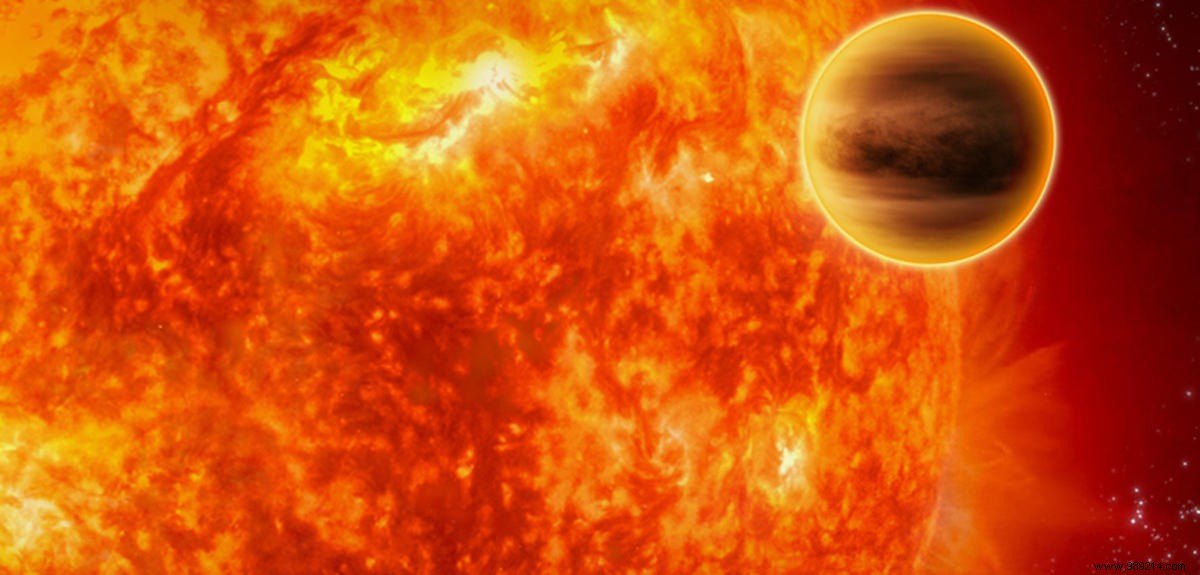A team of astronomers announces the discovery of the planet with the shortest known orbit. This gas giant completes one revolution of its star in just sixteen hours. And it's only accelerating, to the point that she could soon be swallowed up.
"Hot Jupiters" are gaseous planets with a mass equivalent to or greater than that of Jupiter, whose temperature exceeds 1000 kelvins (just over 700°C). These worlds, which have no equals in the Solar System, generally evolve very close to their star. That's why it's so hot there.
To date, astronomers have identified about a hundred such planets in the Milky Way. On this sample, only a handful offer an orbital period of less than one day. This type of world, which truly "flirts" with the surface of their star, is therefore very rare , hence the interest of this new discovery.
A team of astronomers led by Avi Shporer, from the Massachusetts Institute of Technology (MIT), announces that they have isolated the presence of a world completing a revolution of its star in only sixteen hours. You will find it 855 light years from Earth in the constellation of Hercules.
Researchers have identified the presence of this planet, designated TOI-2109b, in data from NASA's Transiting Exoplanet Survey Satellite (TESS), which has been orbiting Earth for April 2018.
This observatory is calibrated to detect the presence of extrasolar worlds evolving very close around their stars. Note that TESS does not see these planets directly, but monitors small dips in brightness betraying their repeated passages in front of their star (transit method).
In the case of TOI-2109b, these drops would therefore have occurred every sixteen hours . According to the statement, this is faster than any other gas giant discovered to date. Other telescopes then confirmed the presence of this world.

Since then, follow-up analyzes have revealed several characteristics. Already, this planet evolves only 2.4 million kilometers from its star . For comparison, Mercury is about twenty-four times farther from the sun. According to the analyses, TOI-2109b would also be five times more massive and about 30% larger than Jupiter. As for its star, it is about twice as large and more massive than the Sun. Finally, TOI-2109b also appears to be the second hottest known exoplanet known with daytime temperatures reaching nearly 3,300 degrees Celsius on the "day" side.
For astronomers, perhaps the most intriguing feature of TOI-2109b is the change in its orbit. Indeed, the planet seems to be getting closer to its star, its orbit accelerating at the rate of 10 to 750 milliseconds per year. This is unheard of. We won't see it disappear in our lifetime, but according to astronomers' estimates, it could be swallowed up by its star within ten million years .
TESS is expected to set its "eyes" on this star again in May and June 2022. Scientists hope that these observations could allow them to study the phenomenon of orbital decay.